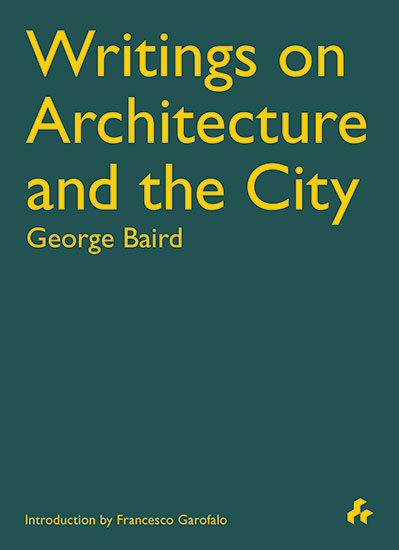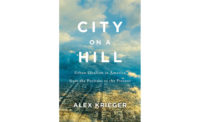Writings on Architecture and the City, by George Baird. Artifice Books on Architecture, February 2015, 292 pages, $29.95.
It is impossible to do justice in the space available to the critical writing of the distinguished Canadian architect/theorist George Baird. Nevertheless, some of the heterogeneous character of this anthology may be gleaned from the title, ranging, as it does, from semiotics to urban planning. In regard to the latter, the postwar rationalist urbanism of the Italian Tendenza movement influenced him in working with students on typological (building type) and morphological (urban structure) studies for the city of Toronto. This mode of beholding underpinned Baird’s urban discourse until his book The Space of Appearance (1995) showed his turn toward the public realm in a political sense as that was elaborated in Hannah Arendt’s The Human Condition (1954).
The first piece in Writings, arising out of Baird’s encounter with the London architectural scene in the mid-1960s, is his essay “La Dimension Amoureuse” of 1968, the title indebted to Roland Barthes, who had identified rhetoric as the amorous dimension of literature. This literary concept, derived from structural linguistics, would eventually prove to be inapplicable to architecture, a fact that Baird and Charles Jencks initially ignored in their anthology Meaning in Architecture (1969), such was the promise of semiotics then as a system for decoding architecture. My own essay in that volume emphasized instead the ontological/architectural implications of Arendt’s magnum opus, and thereafter Baird and I would remain variously involved with Arendt’s discourse, discriminating between the public and private aspects of the built environment.
One of the corollaries of this interest has been Baird’s involvement with a phenomenological—visual, haptic, and kinesthetic perception of architecture—an approach that is particularly evident in his exceptionally sensitive appraisal, dating from 1970, of the work of Alvar Aalto. Of the role played by the handrail in Aalto’s architecture, we find Baird writing:
Touching a door crystallizes an experience for a moment, touching a railing extends it in time. Consider the railing leading to the council chamber in the Saynatsalo Town Hall or the one on the staircases in the Otaniemi Institute of Technology. Like Aalto’s door handles those forms owe their cross section to the shape of the human hand . . . But while a handle is usually grasped only for an instant, the extent of a railing can be traced by the hand as far as the railing goes… all these railings extend far beyond the physical limits of the steps [and] in penetrating so persuasively the space of the building’s interiors they form an elaborate network of touch.
A similar corporeality—that is, a concern with the body’s relationship to space—is found in both Hans Scharoun’s Philharmonie in Berlin (1963) and Frank Gehry’s Walt Disney Concert Hall in Los Angeles (2010), made all the more poignant by the fact that the latter was consciously predicated on the former. After describing the difficulty he had had in finding his way in and out of Disney Hall during the intermission, Baird recounts his experience of the same passage to and fro in the Philharmonie, recalling concertgoers standing or seated in the intermission on the mezzanines to one side of the belly of Scharoun’s auditorium, “basking in the palpable public pleasure of their spectacular visibility” and regaining their seats easily after the intermission. Needless to say, all of this was denied by Gehry’s manifest indifference to the promenade as a space of appearance in Disney.
Subsequently, the phenomenological would become increasingly important for Baird as a basis upon which to mount a critique of both modernity and postmodernity, not to mention the pragmatic “post-critical” position advanced by Sarah Whiting and Robert Somol. In his essay “Criticality and its Discontents,” Baird summarily disposes of the Whiting/Somol position by pointing out that “the new architecture will devolve into the merely pragmatic and merely decorative with astonishing speed if it doesn’t have a supporting body of theory.”
The final section consists of intellectual portraits of a number of architects and critics whom Baird admires, including Rem Koolhaas, Ignasi de Solá-Morales, Colin Rowe, and, above all, Joseph Rykwert. Baird regards Rykwert as the most anthropologically informed critic of our time, inasmuch as he was equally opposed to both the metaphysical formalism of Aldo Rossi and the neofunctionalism of the Hochschule für Gestaltung, Ulm. Baird’s closely argued criticism seems to be as pertinent now as it was in the late 1960s, although one is less certain that his equally pervasive optimism about the future of the city will prove to be justified.
Kenneth Frampton is the author of A Genealogy of Modern Architecture: Comparative Critical Analysis of Built Form. Read George Baird's of that book here.





Post a comment to this article
Report Abusive Comment